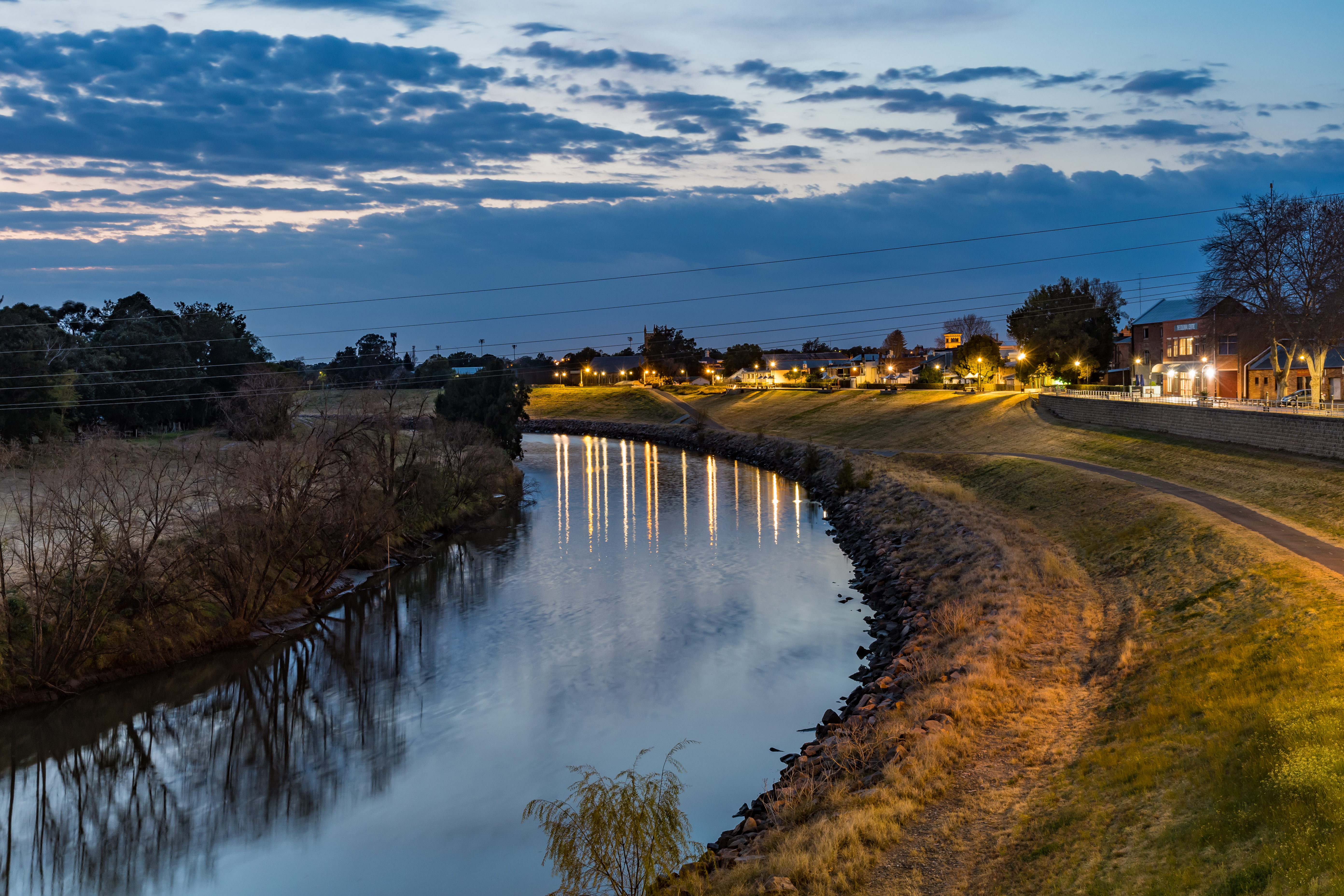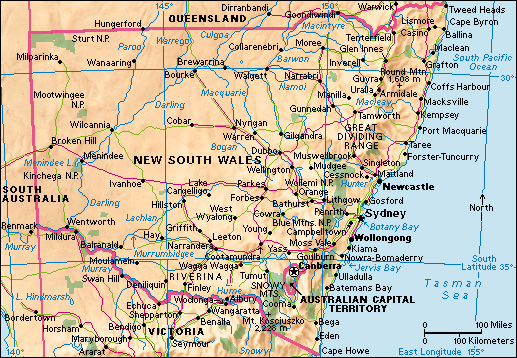Hunter River rises in the Mount Royal Range of New South Wales, Australia, and flows into the Pacific Ocean at Newcastle. The Goulburn River is the chief tributary. The Hunter river basin covers 8,530 square miles (22,100 square kilometers). The Hunter Valley is a rich agricultural and grazing area.


Dairy farming is predominant on the fertile alluvial river flats, where flowing water has deposited soil. There are large dairy factories in Muswellbrook, Singleton, Hexham, and Dungog, which supply milk and dairy products to Sydney and Newcastle.
Beef cattle graze on the hills and ridges of the valley margins, particularly between Scone and the coast. Farmers raise sheep on the northwestern part of the valley, chiefly for wool production. Hogs are also kept on the dairy farms. The largest abattoirs (slaughterhouses) are in Newcastle, Maitland, and Aberdeen, which service the local meat-processing industry.
Wheat, corn, oats, sorghum, barley, millet, and other grains are grown mainly for livestock feed, and lucerne (alfalfa) is the most common fodder crop. Market gardening is centered in Maitland.
The cultivation of grapes for red and white table wines started in the Hunter Valley in the 1830’s. Vineyards grow on the red and brown sandy loam soils near Pokolbin, Dalwood, and Cessnock.
The Hunter Valley is a rapidly developing industrial and coal-mining area. Large thermal electric power generating stations in Wangi Wangi and Vales Point on Lake Macquarie, and in Liddell, near Muswellbrook, have their own coal mines nearby.
